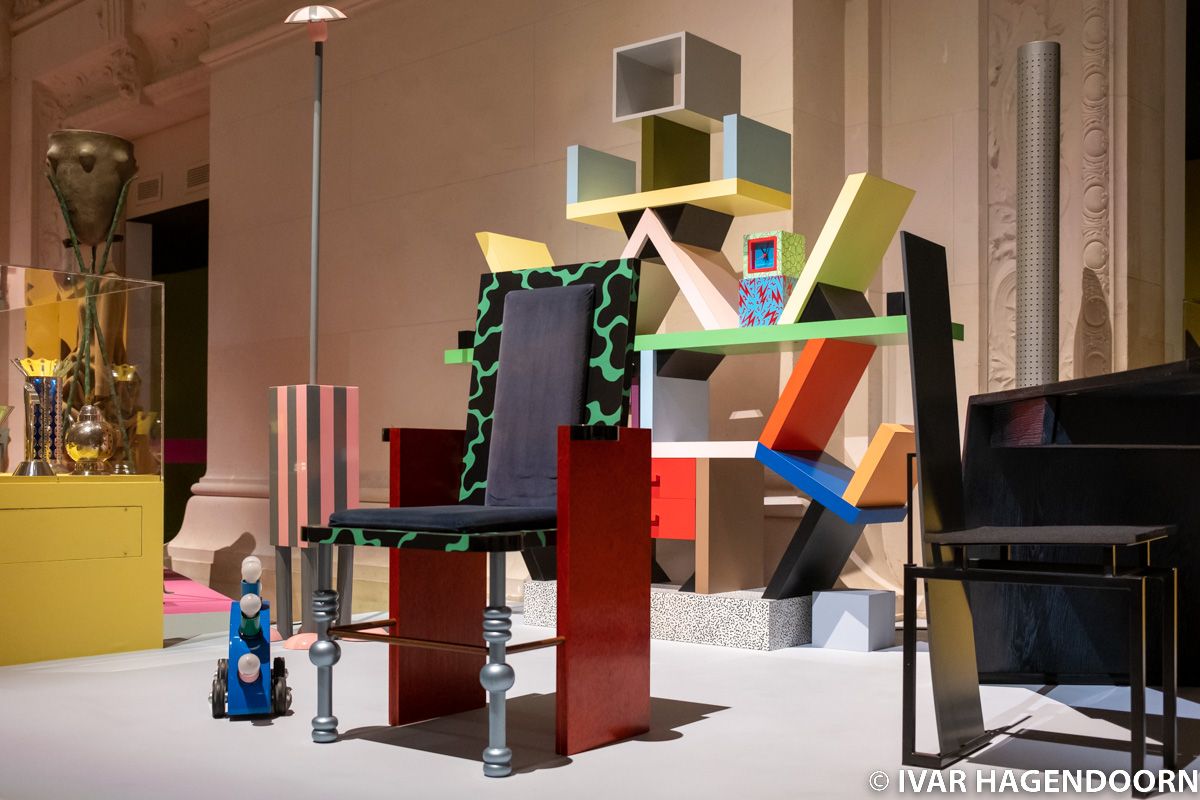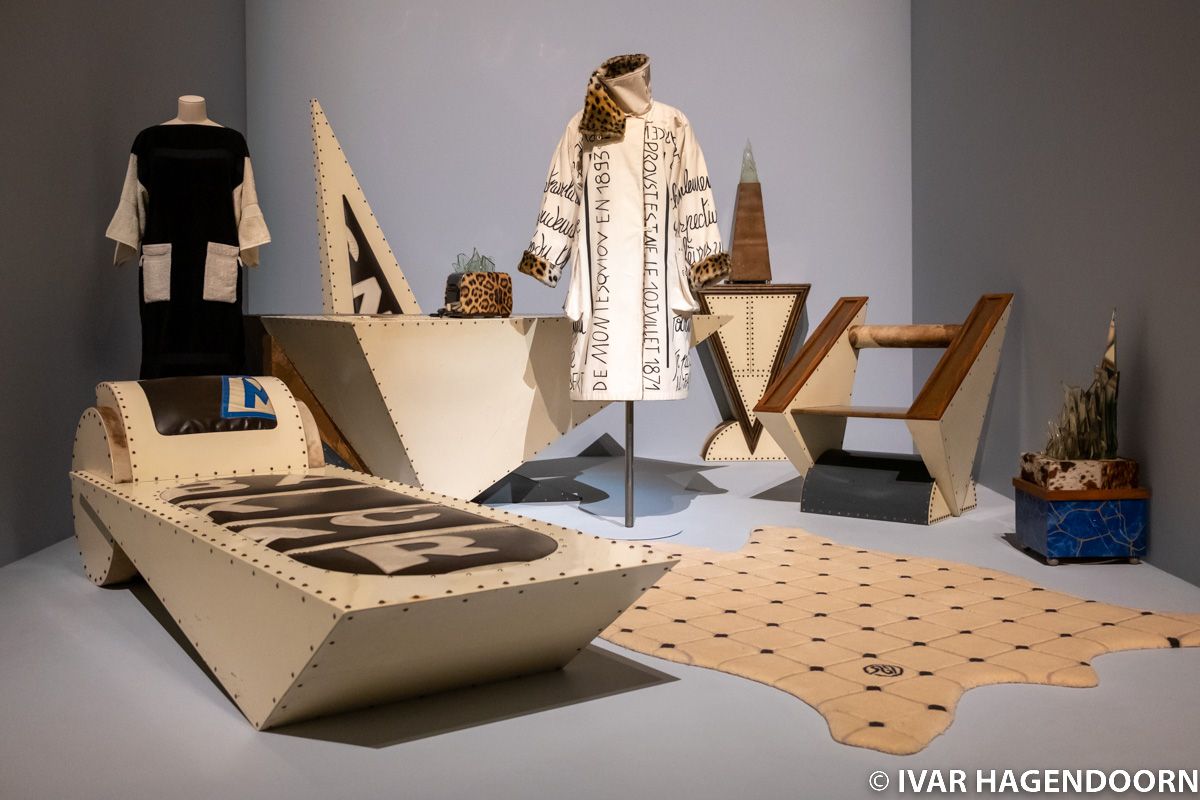
The Musée des Arts Décoratifs in Paris celebrates the 80s with a vivid exhibition bringing together more than 700 works ranging from furniture to fashion and including album covers, music videos, commercials, flyers and advertising campaigns.
I had to queue 15 minutes to get in. I hadn't booked a ticket in advance, because I didn't expect it to be crowded. It's a popular exhibition and for good reason. There's a lot to see and enjoy.
I tend to associate the 80s with Ettore Sottsass, Memphis, Alessandro Mendini, Philippe Starck, Thierry Mugler and Jean-Paul Gaultier, all of whom designers that I’m not a big fan of. But the 80s were also when Issey Miyake, Comme des Garçons and Yohji Yamamoto took the fashion world by storm.
In architecture the 1980s was the decade of postmodernism, think Robert Venturi and Denise Scott Brown, Michael Graves, Philip Johnson and Ricardo Bofill, whose iconic Les Espaces d’Abraxas in Paris was inspired by classical Greek architecture, but rather paradoxically now looks futuristic enough to serve in the dystopian sci-fi series The Hunger Games. The late 1980s were also the years of deconstruction in architecture, which would have a major impact on my thinking, although most designs by the likes of Bernard Tschumi, Peter Eisenman and Daniel Libeskind as well as Rem Koolhaas, Frank Gehry and Zaha Hadid, who at some point were also associated with deconstruction, would not be built or completed until the early 90s.
What is interesting is that there is such a thing as the 80s. The exhibition shows that the 80s were a period of eclecticism and a clash of styles. The curators convey this diversity through a scenography combining fashion, furniture and design.

The 80s were marked by various historic events, perhaps first and foremost the fall of the Berlin Wall, but also by the AIDS epidemic, and by the economic policies introduced by Margaret Thatcher in the United Kingdom and Ronald Reagan in the United States, which would have a lasting impact.
In France the 80s was the decade of François Mitterand, president from 1981 to 1995, who would make a mark on Paris with a series of “grands traveaux” or grand projects, which included the Louvre Pyramid, the Opéra Bastille, the Grande Arche de La Défense, the Musée d’Orsay, the Parc de la Villette, the Institut du Monde Arabe and the new Bibliothèque nationale de France. While some of these projects were initiated under Mitterand’s predecessor, Valéry Giscard d’Estaing, they are typically attributed to Mitterand.
As the exhibition makes clear the French state sponsored the creative industry in other ways as well, for example by the creation of the Institut Français de la Mode, and by allowing fashion shows to be held in the Cour Carrée at the Louvre, which brought fashion at the centre of “high” culture.
In music the 80s were the decade of punk, new wave and the new romantics, but it was also when the first hip-hop records hit the charts. I must say that the only French band that I recall from that period are Les Ritas Mitsouko, and only by name. In pop music the 80s were defined by British and American acts. But as the exhibition shows punks in France dressed the same as in the UK.
For a flashback to the 80s this exhibition is not to be missed.
Années 80: Mode, design et graphisme en France is at the Musée des Arts Décoratifs, Paris until 16 April 2023.